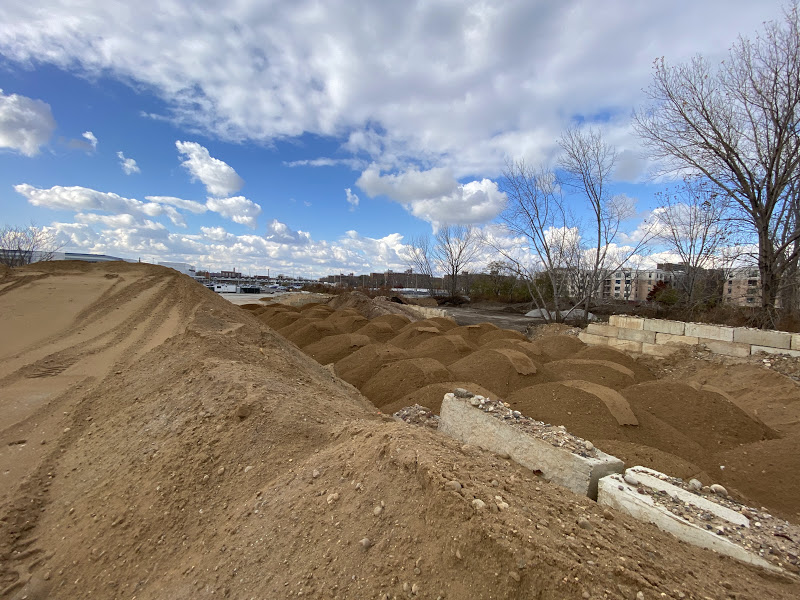How NYC is using ancient soil for a healthier city
The Clean Soil Bank collects dirt from construction sites and distributes it to make community gardens, clean up contaminated soils and provide environmental remediation.
Carrie Klein • October 30, 2024

NYC's stockpile of clean soil is ready for projects across the city in need of soil. [Credit: NYC Office of Environmental Remediation]
Hundreds of feet below Manhattan’s shiny buildings is something ancient, cold and surprisingly useful: glacial soil. During construction projects, that 24,000-year-old soil is unearthed for the first time. Even though it’s clean and makes nutritious topsoil, it used to be trucked away to landfills — thought to be useful for nothing beyond clearing a hole.
The main reason for that was fear that the soil was contaminated with lead, arsenic, pesticides and other toxic substances, but when new research showed that only the top level of soil was potentially harmful, the city changed its practices. Now, at 830 Forbell St. in Brooklyn sits the Clean Soil Bank: a giant pile of clean soil ready for filling community gardens and covering contaminated land.
In 2023 alone, the stockpile provided 2,732 cubic yards of clean soil to 25 city projects and saved over $100,000 on funds that would otherwise be spent on new soil. The soil has been used to fill tree pits, refurbish park lands and create natural drainage systems to filter stormwater and runoff.
Glacial soil from construction and excavation sites has also been studied as a way to make gardening in the city safer. In 2019, New York scientists showed that using excavated soil from the Clean Soil Bank, combined with locally produced compost, as a topsoil for gardening was successful in reducing contamination to safe levels.
In 2020, the city was allowed to open a soil storage yard, changing the narrative of soil from “regulated solid waste” to a useful resource, said Zach Schreiber, assistant director at the NYC Office of Environmental Remediation. Creating a local supply of clean soil not only reduces greenhouse gas emissions associated with transporting soil but also cuts costs, Schreiber said.
“No other city has this,” said Sara Perl Egendorf, assistant professor of environmental studies and science at Pace University. “New York City is this model for dealing with these materials that would otherwise be sent far from the city.” And for those interested, it’s free to both deposit and receive soil.